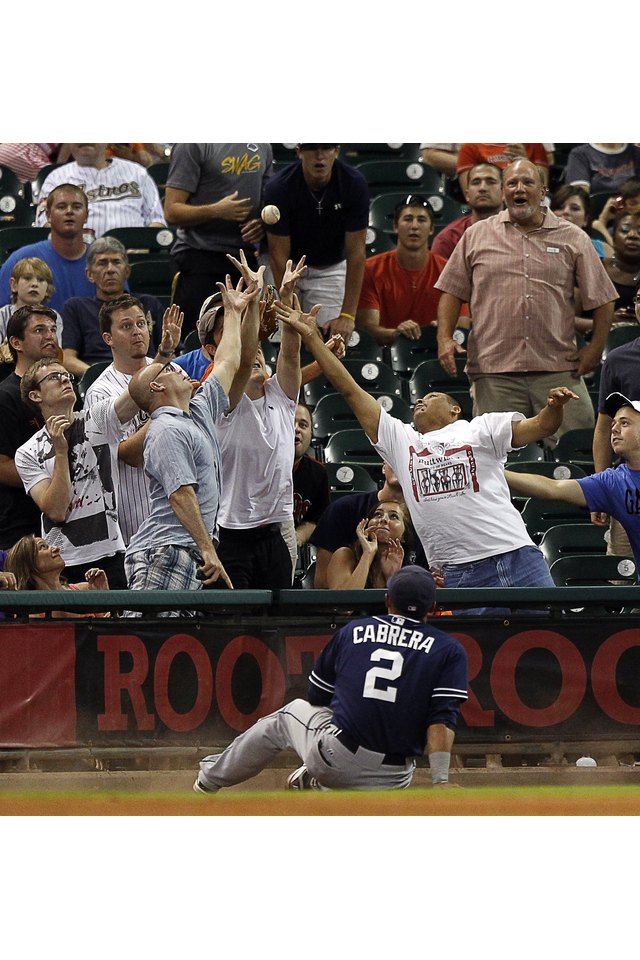Baseball Rules for a Ball Out of Bounds

Baseball fields are divided into two main parts, labeled “fair” and “foul” territory. The inner section is fair territory, in which balls are put into play. The remainder of the field is foul territory, which is out of bounds in most cases. Counterintuitively, the lines on the field that separate fair and foul territory are referred to as the “foul lines,” but are actually parts of fair territory. The same is true of the “foul poles” that help umpires determine whether a ball hit in the stands is fair or foul.
Foul Balls
A foul ball is counted as a strike against the batter, unless he already has two strikes. If a batter with two strikes hits a foul ball he is not charged with a third strike, with two exceptions. First, if a batter with two strikes bunts the ball foul, he is charged with a third strike and is out. If a batter with two strikes hits a foul tip that is caught by the catcher, a third strike is charged.
Ground Balls
A ball that doesn’t reach the imaginary line between first and third base is fair if it stops in fair territory or is touched by a fielder in fair territory. A ball that lands in fair territory before reaching the first-third base line, then spins back and stops in foul territory without being touched, is a foul ball. A ground ball that travels beyond the imaginary first-third base line is fair if it passes between first and third bases, or if it passes directly over first or third base. Any batted ball that strikes first or third base is a fair ball. When a ground ball is ruled foul, the ball is dead, and any base runners must return to the bases they occupied when the ball was hit.
Fly Balls
A fly ball that lands within the field of play is fair only if it lands in fair territory, or is touched by a fielder in fair territory before it lands. Unlike a ground ball, a ball hit in the air that travels directly over first or third base, but first touches the field in foul territory, is a foul ball.
Catching Balls in Foul Territory
If a player catches a foul ball, other than a foul tip, the batter is out, but the runners may tag up and try to advance, just as they may when a fielder catches a ball in fair territory. A foul tip, however, is not treated as a ball caught in foul territory, but is treated as if it were a swinging strike. For example, if a runner on first tries to steal second and the batter’s foul tip is caught by the catcher, the runner may continue without returning to first to tag up.
Ball Hit or Thrown Out of Play
A ball hit into the stands that passes between the foul poles, or strikes a foul pole, is a home run. For example, if a ball hit down the right field line passes the foul pole in fair territory, then curves into foul territory before landing, the result is a home run. If a ball lands on the field in fair territory, then bounces into the stands before it’s touched, the batter is awarded a double. If a fielder throws wildly and the ball goes into the stands or one of the dugouts, the ball is dead and all runners advance two bases. For example, if a shortstop fielding a ground ball throws the ball into the seats, the batter is advanced to second base. A wild pitch or pickoff throw by a pitcher that bounces into the stands also results in a dead ball, but the runners are only entitled to move up one base.
References
Writer Bio
M.L. Rose has worked as a print and online journalist for more than 20 years. He has contributed to a variety of national and local publications, specializing in sports writing. Rose holds a B.A. in communications.
